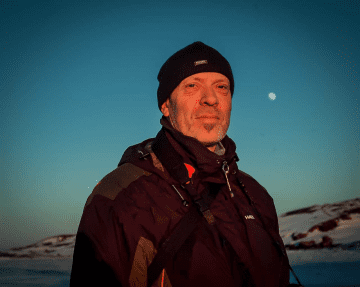Herring with driftnets

Markku Saiha,
CEO,
Paapuuri Oy,
Finland
Here in Finland, we have long talked about local food, sustainable food production and the carbon footprint. This year, the security of supply also became part of the debate. As usual, it’s a long journey from conversation to decisions.
Where the improvement of the state of the Baltic Sea is concerned, these topics have rarely been present. It is well known that fishing is the cheapest way to improve the quality of water as it removes nutrients, while at the same time providing healthy food in a sustainable fashion. Here in Finland we have not yet turned our food situation into a problem, but the changes caused by the pandemic showed, however, that we should prepare ourselves. History can teach us and provide solutions in this regard as well.
Before the time of independence, more than a century and a half ago, there was no national plan in Finland to make ends meet in food production. The problem with agriculture was the dependence on bread grain, and the sowing area for rye accounted for almost half of it, while the rest was barley and oats. The reason for the popularity of rye was its suitability for the harsh farming environment, it had to withstand cold and give a reasonably good harvest.
The signs of danger were in the air in the autumn of 1866, when the rainy autumn slowed down the sowing of rye. The following winter was exceptionally cold and the Baltic Sea, for example, froze in its entirety. In the spring of 1867, many farmers were faced with a desolate sight: most of the rye
shoots had been destroyed. Barley was now expected to ease the situation, but this hope also withered withy the late arrival of the summer. During the hunger years of 1867–1868 mortality became exceptionally high.
The first EU-project?
Something had to be done, and we began a rapid reform in agricultural production. The time of cold and long winters had also been tough in the coastal areas, but fishing had already been developed before, and the harsh times somewhat easier than inland.
The development was considerably accelerated by a new project. In the summer of 1864, a Gotland fisherman was hired to train herring fishing, and he brought his boat and fishing gear over the sea to Kökar in the Åland Islands. For the next summer, three fishermen were already hired, and in the third summer many of the archipelago villages had fishermen learning the new skills and driftnet fishing quickly spread to the Åland Islands and the counties of Turunmaa, Ostrobothnia and Uusimaa as well.
The training of fishermen was inspired by an organisation whose mission was to compensate for the devastation of the Crimean War (1854–1855). In 1861, H.J. Holmberg, a state fisheries inspector, was sent to the Netherlands to investigate why there was such good herring on the market. The survey was supposed to cover the methods of preparing the fish. However, Holmberg concluded that the reason for the good fish at the market was not in the preparation methods but in the fact that herring was caught out in the open sea. This resulted in the idea of using the expertise of the Gotland people, and through a local priest and the Russian consul of Visby, the fishermen were contacted.
At the same time, local fishing practises were developed elsewhere. Of necerssity. In Satakunta home region studies from 1911, S. Linnainmaa writes about fishing on the coast of North Satakunta, and states that “in 1862 then begins the fishing method that is most common today, viz. driftnet fishing in the high seas, that is going to ”rääki”. It is invented in the islets of Ahlainen. The inventor is Kustaa Vesterlund, the host of Talloora island, who is locally well remembered for his many ingenious initiatives.”
Tradition has it that Vesterlund had heard from Swedish fish buyers that somewhere in the south abundant herring had been caught using a new catching method. Once the idea was clear, the host of Talloora started weaving the nets and went out fishing. New fishing method was quickly adopted. Driftnet fishing was an important part of fishing cultrure on the coast of Satakunta and it played a key role in alleviating the food crisis in the years of food shortage.
The diverse fishing method, which began on Talloora island and spread to the entire Finnish sea area at the end of the 19th century, produced new innovations in boats and fishing gear as well as in the operating models of the coastal communities. The changes were reflected in various changes in the landscape and in the population of the archipelago as well and helped start a period of prosperous industrialization.
The 145-year history of driftnet fishing ended in 2007 with a European Union decision banning all driftnet fishing in the Baltic Sea.
Fish was caught and there was enough of it as far as the herring could be transported to the province. For a long time, the fisherman was a valuable part of food supply in our country and he put his two cents in the production of sustainable, low-carbon local food.
Email: markku.saiha@itameri.net
Expert article 2897
> Back to Baltic Rim Economies 1/2021
To receive the Baltic Rim Economies review free of charge, you may register to the mailing list.
The review is published 4-6 times a year.
